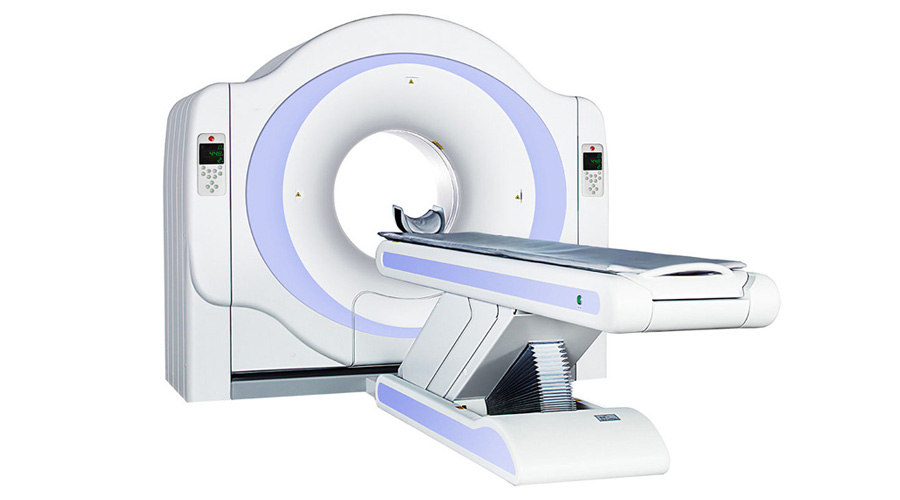
PET/CT
PET-CT is an imaging device that combines positron emission tomography and computed tomography.
PET/CT is the most advanced medical imaging technique used especially in oncology to detect the tumor, determine its grade (staging), evaluate the response to treatment, plan radiotherapy and, in some cases, determine whether the existing mass is benign or malignant. It is also used to determine the epilepsy focus in patients with epilepsy, to diagnose neurological cases such as Alzheimer's disease at an early stage, and to investigate the presence of viable tissue in the heart after a heart attack. Its most important feature is to provide functional information and to take all body images in 3D.
Where is PET used?
1- Whole body image is taken in oncology studies. It gives information about whether the suspicious lesion contains cancer tissue, whether it has spread to the body, the effectiveness of the treatments, and recurrences after treatment.
2- Cardiac PET; only images of the heart are taken. It is the most reliable method used to determine the vitality of the heart muscle.
3- Brain PET; It is especially used for detecting the localization of epileptic foci that are resistant to medical treatment and for surgical treatment, and for early diagnosis of Alzheimer's disease and to differentiate it from other types of dementia.
What are the indications of PET in oncological cases?
1 - In the investigation of the possibility of malignancy of the mass detected by other imaging methods;
- Lung cancer
- Esophageal cancer
- Colorectal cancer
- lymphoma
- melanoma
- Ovarian cervical cancers
- It can be used in head and neck cancers.
2 - In the initial staging and post-treatment staging of the known tumoral mass;
- Lung cancer
- Esophageal cancer
- Colorectal cancer
- lymphoma
- melanoma
- Ovarian cervical cancers
- It can be used in head and neck cancers.
3 - In the evaluation of response to treatment; If the ineffectiveness of the chemotherapy received by the patient is detected in the early stages, the treatment scheme may change.
4 - In post-treatment follow-up, evaluation of recurrences or residual tissue
5 - Staging and prognosis of primary tumor (especially in a known head and neck tumor or glioma)
6 - In determining the biopsy site in a known mass; The correct diagnosis of the biopsy taken from the place where the uptake is concentrated is hidden.
What are the materials used for PET extraction?
Today, FDG (2 - Fluorodeoxy-D-glucose) linked with f-18, which shows glucose metabolism (95%) most, is used. In addition, positron emitting radionuclides such as C-11, N-13, O-15 are used to provide information about perfusion, metabolism and receptors by binding with various agents. (many of which are routinely used).
What are the patient preparations for PET extraction?
PATIENT PREPARATIONS
FOR PATIENTS WITH A MORNING APPOINTMENT
The day before the shoot, nothing should be eaten or drunk after 00:00 and 01:00 (water is drinkable only) Telebrix 35/50ml is taken from the pharmacy. Half of the drug is mixed with 1.5 liters of drinking water. After 00:00 at night, 2 glasses will be drunk, 2 glasses will be drunk when you wake up in the morning, the remaining water will be brought to our center. It will be drunk before shooting.
FOR PATIENTS WITH AN AFTERNOON APPOINTMENT
On the day of the shooting, a light breakfast can be made between 06:00 and 07:00 in the morning. Afterwards, nothing will be eaten or drunk. (Water can only be drunk) Telebrix 350/50 ml. is taken from the pharmacy. Half of the drug is mixed into 1.5 liters of drinking water. To be drunk before shooting.
How is PET extraction done?
First of all, the patient's blood sugar is determined. If it is between 60-150 mg / dl, after the intravenous administration of radioactive material in the room prepared for the patient, the patient is laid down calmly for 45 minutes to allow the drug to spread throughout the body. Before the drug is given, a sedating agent is given to reduce the patient's muscle activity as much as possible. The patient spends this bedtime as still and speechless as possible. At the end of the waiting period, the patient whose bladder is emptied is taken to the extraction room. It is completed in 45 to 60 minutes in shooting.
The patient who has completed the shooting is rested in a waiting room for 30 minutes. At that time, it is checked whether additional images are required. If additional extraction is not required, the patient can eat and drink and is sent home.
Is the radiation dose received by the patient high during PET extraction?
No, it is not higher than a patient with a tomography. Since only the radioactive material is given to the patient, pregnant women and small children are asked to stay away from it until 4-5 hours after the injection.